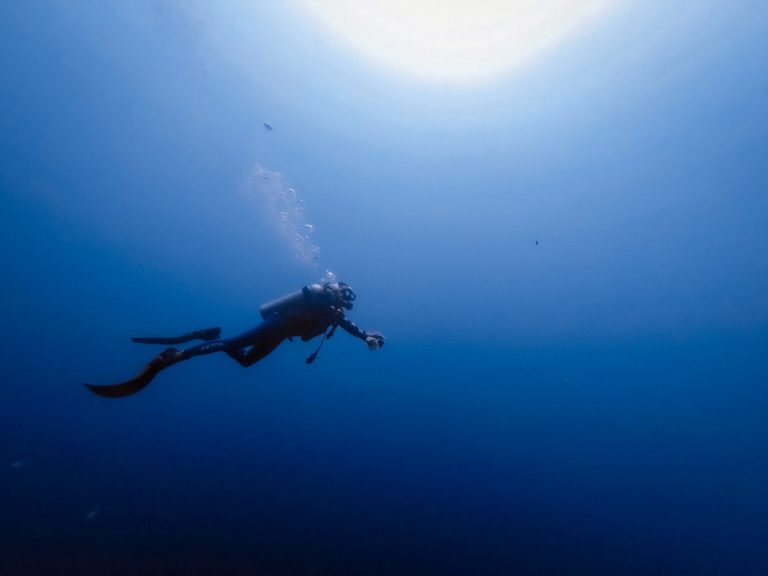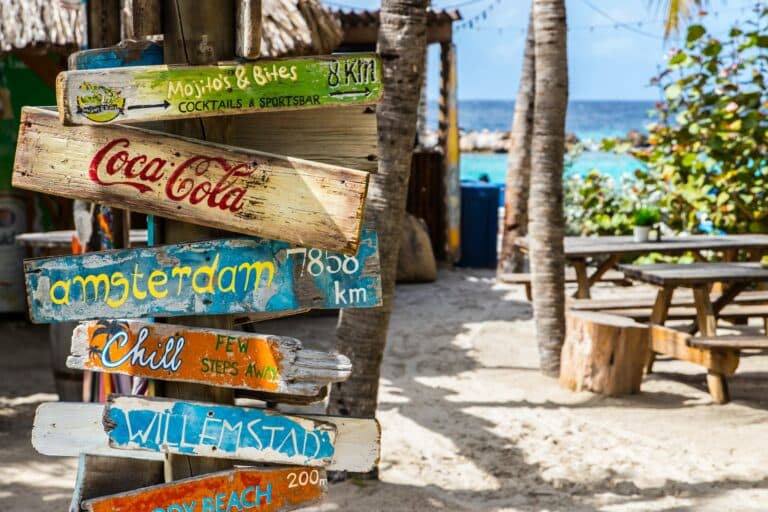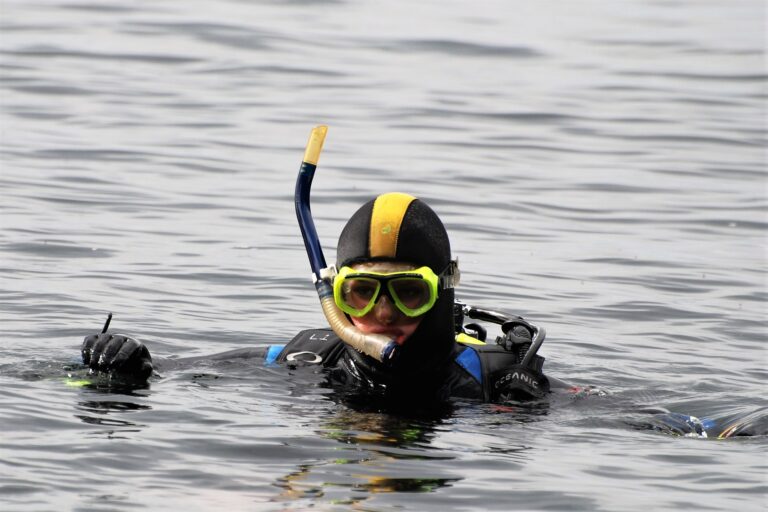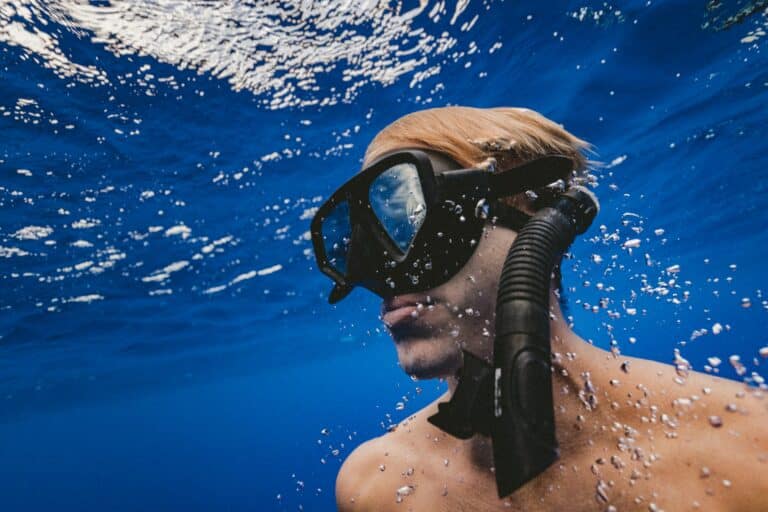Scuba diving is a fun and accessible activity, and getting scuba certified is a relatively easy process. But how long does it take to get scuba certified, and what are the components for the courses? In this article, we will look at what is required to get certified and why different dive centers might have different schedules for getting scuba certified!
How Long Does it Take to Get Scuba Certified
A scuba certification allows you and a certified buddy to go diving together without a professional guide. This is because the certification or ‘diving license‘ means that you have completed and passed the components that are required by the agency.
The course will be the same around the world, depending on which agency you choose. Some popular agencies include; PADI, SSI, RAID, BSAC, NAUI, CMAS and more.
Read More: PADI vs. NAUI – Which One Should I Choose?
Each scuba certification will have variations of the following components or sections during the course. These will be;
Dive Theory
Each agency has created its own course guide including; manual, textbook, videos, quizzes, and exams for their scuba certification course. In the past, most of this was completed with a dive instructor in a typical classroom setting. However, online sessions have become more and more popular, with students signing up and completing the theory in their own time.
This can take 1-1.5 full days to cover all of the dive theory in a classroom, or can be broken up more comfortably over a few days.
Confined Water Session
Before heading into the open water, you will also practice and complete scuba diving skills in confined waters. Confined waters will mean a body of water that is calm, is typically shallow and has a controlled environment. Usually, this will be in a swimming pool, but if the conditions are nice, it could also be a shallow lagoon or a sheltered beach.
Scuba Skills to Know – Breathing Underwater without a Mask
To complete all of the basic scuba diving skills and practise safety skills, this water session will usually take a few hours. Again, this can be broken up into several confined sessions depending on how the student is going.
Open Water Dives
Most dive agencies will require you to complete a minimum of 4 scuba dives in the open water. Open water means a body of water that is much larger than a swimming pool, with conditions that are similar to diving in the ocean. Typically, this will take place in…you guessed it, the ocean. But there are other options for open water which include very large aquariums or large pits such as a quarry. The large space allows divers to practice the deepwater skills that are needed for recreational diving.
Scuba Skills – How to Remove and Replace Your Mask Safely Underwater
This can take place over a minimum of 2 days. Most agencies will allow a maximum of 3 open water dives a day.
Different Course Schedules
It is popular for people to get their scuba certifications in their home countries. However, not everyone has easy access to several days off from work or the open water. So a typical schedule in the UK could take several weeks;
- 2-hour theory sessions in the evenings after work
- 1 or 2 Pool sessions on a weekend
- 2 open water dives in a quarry one weekend
- 2 open water dives in a quarry or the coast the following weekend
However, if you plan on going on holiday to a scuba diving destination then your scuba certification might be a lot quicker and packed in just a few days. Koh Tao is a popular place for backpackers and families to get scuba certified. A typical schedule in Koh Tao could just take a few days;
- A full day; theory in the morning + the pool session in the afternoon
- A full day; theory in the morning + 2 dives in the ocean in the afternoon
- A 1/2 or full day; finish off exams in the morning + 2 dives in the ocean in the afternoon
And if you prefer to complete the theory online in your own time; at home after work, or even on your flight to your holiday destination then the course could even be as short as 2 days;
- 1/2 pool session in the morning + 2 dives in the ocean
- Complete the pool session the following morning + 2 final dives in the ocean
What is Better?
There is no better schedule as everyone will have different preferences. But there are a few factors that you could consider when deciding a preferred schedule.
Age
Most agencies allow children 10 years and older to complete the full scuba certification course. This means they will be doing the same dive theory and water skills as an adult. Some of the components during the course may take longer due to age and understanding so a child might need a course that is broken up over a few weeks. Some children (and adults) also have a harder time concentrating for long periods of time, and breaking up the course allows more time to understand physics theory and more time to complete the homework. This can also be applied to people who are older and would prefer more time too.
Physical Ability
Lifting a scuba tank, putting on a wetsuit, taking off the equipment, swimming, using the fins, can all be strenuous motions on your body. If you are struggling with fitness or mobility then the scuba certification can be modified within reason to allow you to complete it. This will be a conversation with your dive instructor and your schedule may be modified for this reason.
Learning Ability
As there is quite a lot of dive theory to process, some people can struggle with this. You may find it easier to concentrate if the theory is broken up into smaller sections. You may also find it easier if you repeat some of the theory several times and with different methods of learning; eg. visually or practical based learning.
Language
It is best to learn how to scuba dive in your own language, however, this is not always possible if you are in a different country. In this case, most agencies will have the materials in different languages to aid you in the dive theory. But if you and the instructor are speaking different languages, then you may prefer to slow down the course.
Getting Scuba Certified
So there you have it, how long does it take to get scuba certified? It depends on your location, your learning preference, and your own time. Getting your scuba certification can be done in a fast-paced 2 or 3 days, or you can take your time and complete the course over a few weeks. It is totally up to you! Just remember that if you feel too rushed, or if the course is dragging, then you can always speak to your dive instructor or dive center and speak about your preferences. At the end of the day, you need to make sure you are comfortable when getting your scuba certification and your license to dive!




















